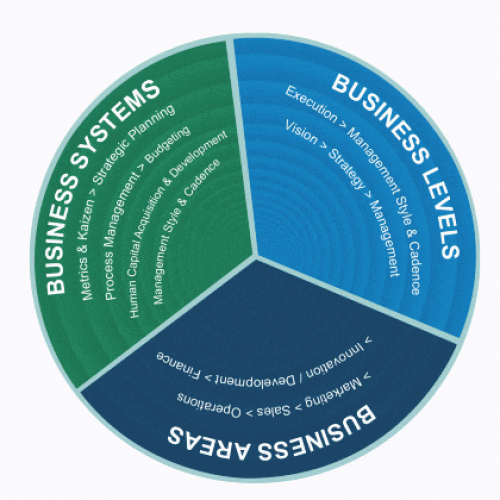As a CEO, taking on the top spot in any organization comes with significant privileges and responsibilities. Whether you are starting a new CEO position or aiming to improve your executive management skills, this list of essential tasks will help you navigate your role effectively.
“The best way to predict the future is to create it.” – Peter Drucker
General Operations
- Establish primary goals of the Board and determine the course of action, whether it’s maintaining the status quo or implementing a new game plan.
- Meet with all first-reports, introduce your vision, and kickstart the implementation of action items on your agenda.
- Have all first-reports complete the Agenda for the Future to align their goals with the company’s vision.
- Discuss the most pressing challenges and opportunities with all first-reports to gain valuable insights.
- In case of survival mode, make necessary and prudent cost cuts while aligning them with the Board’s short and intermediate-term goals.
- Identify and implement action items to boost short-term revenues.
- Formulate and communicate a short-term game plan for the company, aligning it with key stakeholders.
- Prioritize the top ten action items for the whole company and initiate their implementation.
- Identify top goals for the company for the current month, quarter, and year to stay focused on targets.
“The key to success is action, and the essential in action is perseverance.” – Sun Yat-sen
Financial Issues
- Obtain detailed financial statements, payroll, payables, and receivables list to assess the company’s financial health.
- Review departmental budgets for accuracy and relevancy in light of corporate changes and goals.
- Evaluate financial statements to identify strengths and weaknesses.
- Create realistic cash forecasts for the next 90 and 180 days to ensure financial stability.
- Assess asset utilization and redeploy if necessary for short-term gains.
Liabilities / Risks / Time Bombs
- Address the six most significant crises within the first three weeks to mitigate risks.
- Review banking and debt obligations for the next 90, 180, and 365 days to avoid defaults.
- Identify critical suppliers facing issues and take corrective actions.
- Defuse any visible or suspected ticking time bombs to avoid future crises.
“In the modern world of business, it is useless to be a creative, original thinker unless you can also sell what you create.” – David Ogilvy
Regulatory / Legal / Litigation
- Ensure compliance with payroll taxes and resolve any issues with IRS and state agencies.
- Verify compliance with all required regulatory and licensing agencies and resolve any non-compliance.
- Address any legal issues and associated costs.
- Ensure compliance with securities laws and take corrective measures if violations occur.
- Secure patents, trademarks, and copyrights to protect intellectual property.

Free Webinar Replay
Mastering the Top 10 Challenges of Growth & Scaling – Learn How the Top 1% of Entrepreneurs Succeed at Reaching $10M, $50M and $100M+ Against All odds
Product lines / Marketing / Sales / Distribution
- Analyze product delivery schedules and improve meeting commitments.
- Evaluate product development timetables and project management for efficiency.
- Review sales, marketing, and distribution strategies for improvement.
- Identify customer feedback and brand image in the marketplace.
- Analyze the competitive landscape for each product line.
- Optimize pricing models for each product line.
- Identify product line strengths and weaknesses and create an action plan for improvement.
- Plan for future product launches and their impact on revenue and expenses.
- Establish and update the company’s web presence.
- Evaluate marketing and advertising effectiveness and adjust strategies.
- Review sales force and sales support to enhance sales performance.
- Optimize short-term inventory.
- Improve customer support and after-sales service.
Personnel Issues
- Communicate with all company personnel; set up suggestion boxes for feedback.
- Review human resource aspects for legal compliance and cost-saving opportunities.
- Evaluate the strengths and weaknesses of all first reports and create performance plans.
- Reorganize the organizational structure if needed and adjust payroll accordingly.
- Address underperforming and motivate top-performing employees.
- Analyze employee turnover rates to identify problem areas.
- Fill key job functions through targeted searches.
- Address personality issues and company policies impacting morale and productivity.
- Review and modify delegation of authority for all first reports.
- Review all employment contracts and agreements.
- Review and update bonus and compensation programs for employees.
IPO / Merger / Acquisition / Disposition / Dissolution
- Identify strategic opportunities for mergers, acquisitions, and dispositions.
- Address growth strategies, expansions, and downsizing decisions.
- Develop a game plan for selling the company, if needed.
- Prepare a three-year pro forma to determine future valuation potential and IPO or merger potential.
- Develop a plan for liquidation and bankruptcy, if required.
General / Administrative
- Control discretionary expenditures and implement new policies.
- Review facilities, real estate, and equipment leases for cost-cutting opportunities.
- Create or update the business plan.
- Engage with employees at all levels to understand attitudes and challenges.
- Streamline systems and procedures for efficiency.
- Optimize technology implementation within budget constraints.
- Visit all branch offices to assess their performance and cost-effectiveness.
Stockholder Status / Investor Relations
- Enhance investor and stockholder relations and communication.
- Generate updated lists of current shareholders and ownership percentages.
- Review stock options, warrants, and options agreements.
“The function of leadership is to produce more leaders, not more followers.” – Ralph Nader
The Next Steps
- Report to the Board on the status, evaluation, and recommended modifications to the short-term game plan.
- Implement the updated and approved game plan to drive the company forward.
While the source of this list is unknown, these 64 CEO responsibilities are essential for any CEO or senior executive looking to lead their organization to success. Taking on these tasks with determination and foresight will set the stage for growth and prosperity.











